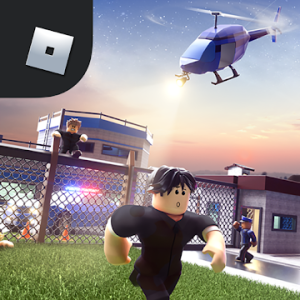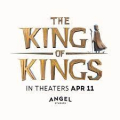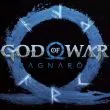The King of Kings
The King of Kings review
Stepping into a Realm of Magnificence
I found myself swept away from the very first moment I entered the world of The King of Kings Movie. It was as if I had stepped through a portal into a realm laden with grandeur and spiritual symbolism. The atmosphere was unlike anything I had ever experienced. The opening scenes immediately ensnared my attention, pulling me into a universe that was both mysterious and profoundly evocative. Every detail, every shadow, and every sliver of light seemed carefully orchestrated to evoke a sense of ancient majesty combined with a timeless narrative. I felt deeply connected to the unfolding spectacle—it was a personal journey, and I found my inner self resonating with the themes of sacrifice, redemption, and destiny.
A Cinematic Tapestry of Storytelling
The narrative structure of the film resonated with me on multiple levels. I was enthralled not merely by an action-packed storyline, but by its layers of metaphor and symbolism. Unlike conventional cinema where events flicker rapidly, here the story moved like a slowly flowing river. Every scene was deliberately paced, inviting me to reflect on the symbolic meaning behind the actions and the expressions of the characters. The narrative was interwoven with historical references and spiritual metaphors, each one building upon the next until I was completely absorbed. For me, the film's tale transcended mere scripture or mythology—it felt like a personal meditation on resilience and the eternal struggle between light and darkness.
Visual Orchestration and Artistic Flourish
I marveled at the visual narrative that was as elaborate as it was moving. The cinematography was a master class in framing and composition. Scenes were bathed in a glow that struck a balance between ethereal light and shadowy depth. I found the use of natural landscapes particularly striking, as they provided both a historical and spiritual context. The grandeur of the set design, combined with meticulously crafted costumes, transported me to a time where legends seemed tangible. Colors were used not simply for their aesthetic value but as a language of emotion—each hue signaling a mood or a significant transformation of the narrative. I often paused, almost in disbelief, at how each frame seemed to capture a living piece of art, each with its own story to tell.
The Resonance of the Musical Score
One of the most enthralling aspects of The King of Kings Movie was its impeccable soundscape. The musical score was deeply intertwined with the storyline, often rising to a crescendo when the narrative demanded a subtle interplay between faith and conflict. As I sat in the dark theater, the orchestration of strings, brass, and choral harmonies carried me into the heart of the epic drama. The sound design was delicate yet powerful, merging traditional melodies with modern techniques. In moments of quiet introspection as well as during grand declarations of destiny, the music conveyed what words often fell short of expressing. It was as if the score was a guiding compass, leading my emotions effortlessly from serene contemplation to fervent passion.
Deconstructing Layers of Symbolic Allegory
The King of Kings Movie is more than a simple retelling of historical events or religious narratives. To me, it was a complex tapestry of symbolic allegory, each thread interlaced with philosophical musings and spiritual inquiry. Everything from the chosen color palette to the positioning of characters within the frame seemed to serve a deliberate purpose. I found myself interpreting recurring symbols—light representing hope, weather as an expression of turmoil, and even the architecture reflecting the strength of human spirit. It struck me how the film challenged its viewers to look beyond the surface of the plot and delve into a meditation on morality and destiny. Every symbol was an invitation to introspection, and I often emerged from the theater pondering their deeper implications.
Emotive Performances and Character Intimacy
One of the film's most arresting features was the compelling portrayal of its characters. I was particularly drawn to the genuine and raw performances that made the journey so personal. The actors brought a palpable intensity to the screen that transcended mere dialogue, breathing life into ancient ideals and timeless struggles. Each character, with their inner conflicts and expressions of virtue and frailty, felt incredibly authentic. Their interactions were layered with unspoken understanding, and I found the silent exchanges to be as emotionally charged as the grand declarations of intent. In moments of vulnerability or quiet courage, I could almost feel the collective pulse of the story and its inherent humanity. The characters did not simply act out roles—they embodied living symbols whose personal quests paralleled the larger mythic journey of the narrative.
Rhythm, Pacing, and Transcendence of Time
The temporal flow of the movie was as captivating as its content. The pacing was meticulously calibrated to ensure that each viewer, including myself, was allowed moments of respite to process the unfolding odyssey. I noticed how certain sequences moved with a deliberate slowness that amplified the emotional gravity, while others surged forward with an almost rhythmic urgency that resonated with the heartbeat of destiny. The film managed to balance breathless excitement with reflective pauses, creating a cadence that was both hymn-like and cinematic in its delivery. There were scenes that allowed the viewer to linger in the silence of thought and others that enveloped me in the kinetic energy of dramatic confrontation. This interplay between deliberate pacing and sudden bursts of movement was nothing short of poetic. It felt as though time itself was a character, a silent observer in an eternal dance between fate and free will.
Masterful Direction and Weaving of Historical Myths
The director's vision loomed large throughout the film, creating an experience that was both visually and emotionally enriching. I marveled at the finesse with which the director managed to weave together historical myth with modern storytelling techniques. The attention to detail was evident in every scene—from the careful placement of symbolic props to the subtle shifts in camera angles that highlighted internal conflicts. The narrative was not a retelling of old facts but a transformation of historical events into a living mythos. I found it refreshing how the film balanced the fidelity to ancient lore while introducing an innovative perspective that felt startlingly contemporary. The intermingling of myth with modern cinematic flair struck a chord with me and deepened my engagement with this timeless narrative. The result was a film that was as intellectually stimulating as it was visually breathtaking—a true testament to the creative spirit of its maker.
Immersive Mechanics of Emotional Engagement
This film is layered with subtle cues designed to elicit a wide spectrum of emotional responses, and I found myself completely enraptured by these gentle yet powerful triggers. The seamless integration of visual motifs and auditory signals ensured that the emotional arcs were prominently felt rather than simply seen. In one of the more memorable sequences, I experienced a rollercoaster of feelings: a blend of hope, despair, and eventual transcendence. The careful build-up of tension was palpable, and every hesitation before a dramatic moment seemed meticulously planned to pull me into a deeper state of empathy with the characters. The entire experience was like navigating a rugged yet beautifully charted emotional terrain, where each twist of the plot gently nudged me to reconsider my own understanding of purpose and destiny.
Architectural Grandeur and Set Piece Wonders
The design and architecture featured throughout the film created a powerful sense of place and time that resonated with me long after each scene concluded. Every set piece was rendered with phenomenal attention to detail. The sweeping vistas, majestic ruins, and ornate architecture were not only visually stunning but also served as narrative symbols. I observed that each location was imbued with a rich backstory, reflecting the splendor and decay of bygone eras. This sense of place was both tangible and emotive, allowing me to feel the weight of history that each image evoked. It was as if the very walls and pathways whispered secrets of past glories and tragedies. The alignment of each architectural element with the thematic core of the story enriched my overall viewing experience, turning each scene into a historical relic that carried meanings beyond its immediate visual appeal.
Interplay Between Tradition and Modern Cinematic Techniques
Throughout my time watching The King of Kings Movie, I often marveled at how it seamlessly merged tradition with innovation. The film managed to retain the reverence and gravity of age-old religious and historical epics while embracing the advancements of modern cinematic technology. I could sense the reverence and respect for tradition in every choreographed battle scene, every serene moment of prayer, and every dramatic exchange of dialogue. At the same time, contemporary techniques—like cutting-edge visual effects and dynamic editing sequences—lent the epic narrative a fresh vibrancy. This juxtaposition of old and new opened up a dialogue between the past and the present, challenging me to view ancient themes with a renewed contemporary lens. It was a symphony of eras, where tradition provided the sacred script and modern artistry fashioned it into a compelling, immersive experience. For me, this delicate balance created a bridge that connected timeless narratives with the pulse of current storytelling practices.
Exploring the Psychological Currents
The King of Kings Movie invited me to delve into the psychological depths of its characters, exploring the complex interplay between inner demons and heroic aspirations. I was particularly drawn to the internal struggles that were subtly portrayed through moments of introspection and quiet resolve. Each character seemed to carry an internal narrative—one that conveyed the burden of legacy, the agony of loss, and the spark of redemption. I found myself analyzing the expressions, the almost imperceptible shifts in tone, and the meaningful silences that spoke volumes about their psychological states. This internal drama was beautifully interwoven with the external conflicts, creating a motif that oscillated between personal and universal battles. It was fascinating to see how the film used these psychological currents to drive not only the plot forward but also to connect with me on an intimate, almost personal level. Every emotional revelation was like peeling back a layer of mystery, inviting me to empathize deeply with the overarching human condition depicted on screen.
Reflections on the Interdisciplinary Narrative Construction
As I navigated through the multifaceted narrative landscape of the film, I was struck by the interdisciplinary approach that the creators employed. The storytelling was not confined to the boundaries of a conventional historical or religious epic; it burst forth with inspirations drawn from literature, philosophy, and even subtle elements of modern psychology. I appreciated how the screenplay balanced the weight of historical myth with the incisiveness of contemporary dialogue. There were instances where poetic language and symbolic imagery merged to form what I could only describe as visual metaphors. This construction of narrative not only deepened the thematic layers but also stimulated my intellectual curiosity, prompting questions about fate, faith, and human resilience. For someone like me who revels in the cross-pollination of ideas, the film provided an endless reservoir of thoughts that challenged, inspired, and often surprised me.
The Emotional Choreography of Conflict and Redemption
During my viewing of The King of Kings Movie, I experienced an emotional choreography that intertwined moments of conflict with scenes of profound redemption. I was particularly captivated by sequences where the tension between opposing forces was rendered with such subtlety that the impact was deeply felt rather than overtly displayed. The layers of internal strife in the characters were represented visually through clever editing and symbolic gestures, which allowed the viewer to perceive every shift in their emotional state. Instead of relying solely on dramatic confrontations, the film often chose quieter, more contemplative moments to underline the transformation of its characters. I found these transitions, from despair to hope or from isolation to communion, to be some of the most moving parts of the narrative. The artistry in these depictions demonstrated the film's remarkable ability to capture the full spectrum of human emotion with both restraint and intensity.
Unraveling the Ethical and Philosophical Implications
One aspect of the movie that left a profound imprint on me was its exploration of ethical dilemmas and philosophical paradoxes. The narrative raised questions about duty, honor, and the sometimes-painful necessity of personal sacrifice. I was compelled to reflect on the nature of true leadership and the intricate dance between destiny and free agency. There were numerous moments where the film paused just long enough for these reflections to permeate the audience's collective consciousness. It was in these instances that I found myself engaging in an internal dialogue, weighing the moral choices presented on screen against my own value system. The film did not provide easy answers; instead, it offered a nuanced perspective that left room for diverse interpretations and personal insights. This intellectual engagement, coupled with the visual and auditory splendor, transformed the viewing experience into a dynamic canvas for moral contemplation and spiritual awakening.
A Living Dialogue Between the Past and My Own Experience
Throughout the film, I continuously sensed a dialogue not only between the characters but also between the historical narrative and my own modern sensibilities. I found that each scene was a mirror reflecting my internal struggles, the quest for meaning, and the desire for transcendence. The film's timeless themes resonated with the ongoing challenge of reconciling tradition with contemporary life—a struggle that feels both deeply personal and universally shared. Whether it was the representation of timeless virtues or the depiction of a battle against internal obscurity, I saw traces of my own journey in the cinematic portrayal. This intergenerational conversation was one of the elements that made the viewing experience so intimate and reflective. I was continuously drawn into a dialogue where the screen served as an intermediary between the lofty ideals of the past and the pragmatic concerns of the present, making each moment feel surprisingly relevant and emotionally charged.
Pros:
- Visually stunning and intricately designed set pieces evoke a sense of ancient grandeur
- Cinematic storytelling weaves history, mythology, and personal introspection effectively
- The musical score seamlessly enhances the emotional depth of scenes
- Careful pacing allows for profound reflective moments between dramatic sequences
- Characters are portrayed with emotional authenticity and symbolic depth
- A blend of traditional themes and modern cinematic techniques creates a timeless narrative
Cons:
- The slow pacing in certain segments might not appeal to viewers seeking constant action
- The heavy reliance on symbolism can lead to confusing narrative layers
- The narrative's complexity may require multiple viewings for a complete understanding
RELATED APPS
Best Games
LATEST ARTICLES
- Journey to The Artist: Navigating Mystery, Landmarks, and the Chiral Network in Death Stranding 2 The immersive world of Death Stranding 2 invites players to explore uncharted territories and engage with unique characters, each offering...
- Lotta Tuulola
- 2025-12-21 05:04:12
- Digital Football's Next Frontier: A Mobile Revolution Ahead of 2026 An unexpected twist in global affairs of digital football gaming now sees a major entertainment company joining forces with the...
- Jasmine Adams
- 2025-12-21 05:04:10
- Beyond the Knock: Unraveling the Secrets of OD's Dark Innovation The renowned game designer explains that his upcoming project, OD, represents a unique technology and is built upon an entirely...
- Kristiina Hanski
- 2025-12-21 05:04:09


























